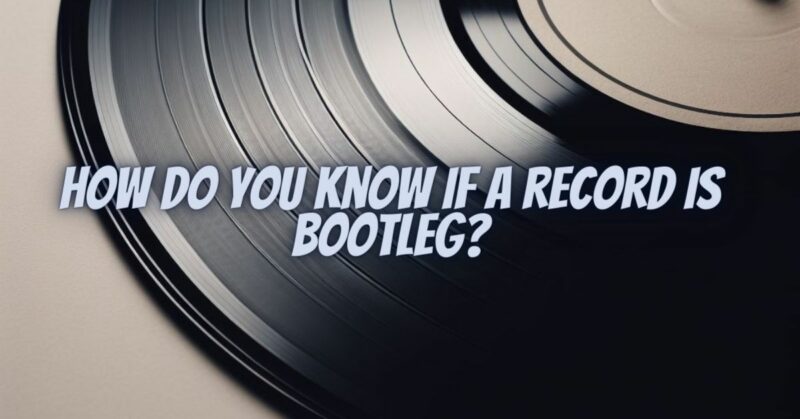For vinyl record collectors and enthusiasts, distinguishing between genuine releases and bootleg vinyl records is crucial. Bootlegs, also known as counterfeit or unauthorized copies, can be deceptive, as they often mimic official releases. In this comprehensive guide, we will explore various methods and techniques to help you identify whether a record is a bootleg.
Understanding Bootleg Vinyl Records
Bootleg vinyl records are unauthorized reproductions of commercially available or unreleased albums. These records are typically created without the permission of the copyright holder, who is usually the artist, record label, or music publisher. Bootlegs can encompass a wide range of music genres and may include live recordings, alternative studio versions, or unreleased tracks.
- Check the Source
The first step in identifying a bootleg is to determine the source of the record. Official releases usually come from well-established record labels and distributors. If you’re purchasing from a reputable record store or directly from the artist’s official website, the likelihood of encountering a bootleg is significantly reduced.
- Analyze the Label and Catalog Number
Pay close attention to the label and catalog number on the record. These details are crucial for verification. Official releases will have a legitimate label and catalog number associated with the record label’s catalog. Bootlegs may attempt to replicate these details, but discrepancies can often be spotted upon closer inspection.
- Inspect the Vinyl Quality
The quality of the vinyl itself can provide clues about a record’s authenticity. Official releases are typically pressed on high-quality vinyl that is well-centered and free from imperfections. Bootlegs may exhibit uneven thickness, warping, or surface noise due to the use of inferior materials and manufacturing processes.
- Examine the Artwork and Packaging
Bootleg vinyl records often try to mimic the artwork and packaging of official releases. Look for signs of low-quality printing, blurry images, misspelled text, or color discrepancies. Official releases usually feature high-quality, professionally designed artwork and packaging.
- Listen to the Audio Quality
A significant indicator of a bootleg is the audio quality. Bootlegs may suffer from poor sound quality, including surface noise, pops, and distorted audio. Compare the sound of the record to a known official release to detect any differences.
- Research the Release History
Conduct research on the specific album you are interested in. Official releases have well-documented release histories, including release dates, pressing plants, and label variations. If you find inconsistencies or a lack of information about the supposed release, it could be a red flag.
- Beware of Unusual Variations
Be cautious of records that claim to be limited editions, special releases, or foreign imports when there is no verifiable information to support these claims. Bootleggers often use such tactics to make their counterfeit records appear more appealing.
- Check for Authenticity Markings
Some official releases may include authenticity markings or holograms on the record sleeve or labels to help buyers distinguish genuine products from counterfeits. Familiarize yourself with these markings for specific releases if applicable.
- Seek Expert Opinions
If you are uncertain about the authenticity of a record, consider seeking the expertise of experienced collectors, record store owners, or online vinyl communities. They may have encountered similar records and can provide valuable insights.
Identifying bootleg vinyl records can be challenging, as bootleggers have become increasingly skilled at replicating official releases. However, by following the methods and techniques outlined in this guide, you can significantly improve your ability to discern genuine records from bootlegs. Remember that a combination of careful examination, research, and consulting with experts can help you make informed purchasing decisions and protect your collection from counterfeit copies.

